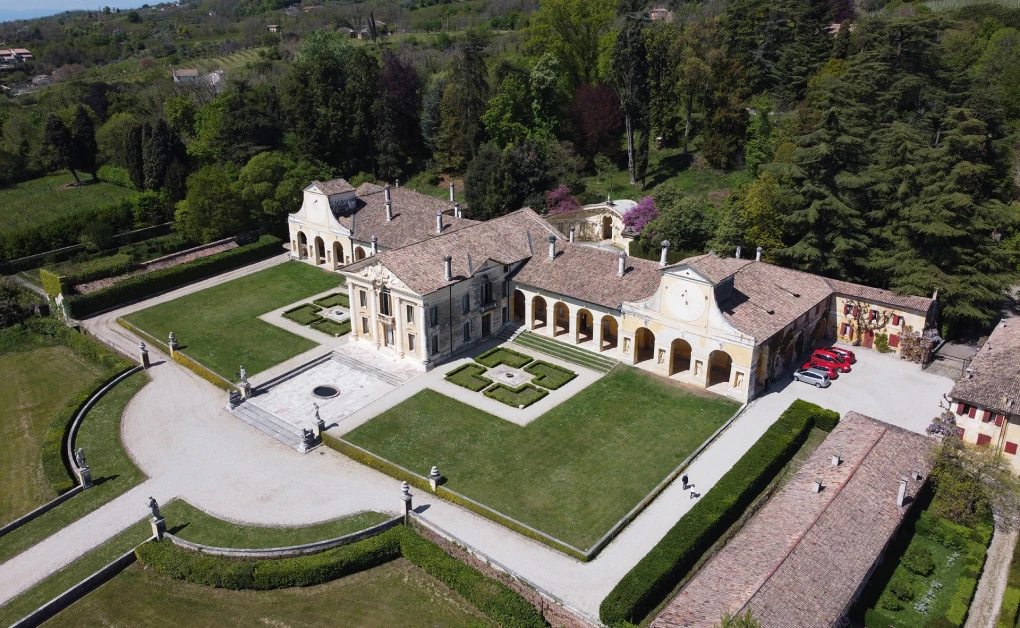The Mansion

Among the most significant works in the extraordinary architectural output of Andrea Palladio, Villa di Maser is also one of the most famous country residences of the Italian Renaissance. A supreme expression of the culture of the time and of the synthesis achieved between architect and patrons, the villa is also considered a virtuous result of the Venetian Republic’s governance over its mainland territories.
The Palladian project, carried out between 1554–55, was built upon a pre existing structure, a manor house overseeing lands long devoted to vine cultivation and rich wine production.
The villa, owned by two prominent members of the Venetian nobility, brothers Daniele and Marcantonio Barbaro, became a symbol of their vast culture, their taste for antiquity, an emblem of artistic sensibility, and a testament to their considerable economic power.
The presence of the barchesse, the dovecotes, and the fishpond, as well as the garden areas dedicated to orchards and herb cultivation, provide tangible evidence of the villa’s agricultural vocation.
At the same time, the creation of this place of retreat, away from public life, also highlights the brothers’ antiquarian interests and their passion for the study of art and architecture especially Daniele, author of the first vernacular edition of Vitruvius’ *De Architectura*, illustrated by Palladio himself in 1556.
In this context, the two sundials placed at the ends of the barchesse also carry special meaning. Long associated with Daniele Barbaro’s scientific pursuits he was the author of the *Treatise on Clocks* they mark the passing of time at the villa and the rhythm of days and seasons.
The two sundials also visibly reflect the involvement of the Volpi di Misurata family, who commissioned Tomaso Buzzi in 1934 to restore the entire villa complex and redesign the two dials. Buzzi was also responsible for the reorganization plan that gave the park and garden a new layout, which later became the starting point for the most recent restoration project.
At Maser, Palladio champions the values expressed by country life productive and, at the same time, restorative for the spirit: “A gentleman will cultivate his land with the industry and art of architecture, but he may also quietly devote himself to the study of letters and to contemplation, as the wise men of old used to do.”
Contributing no less to the fame of the extraordinary Barbaro residence are the fresco cycle by Paolo Veronese and the stuccoes by Alessandro Vittoria.
Thus, the splendid landscape surrounding the villa, ordered by the skilled hand of man, enters the home’s intimacy and merges with Veronese’s imaginative vision.